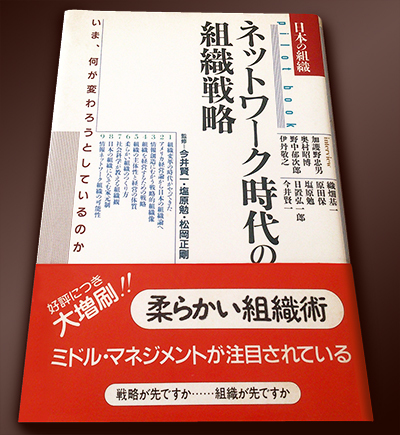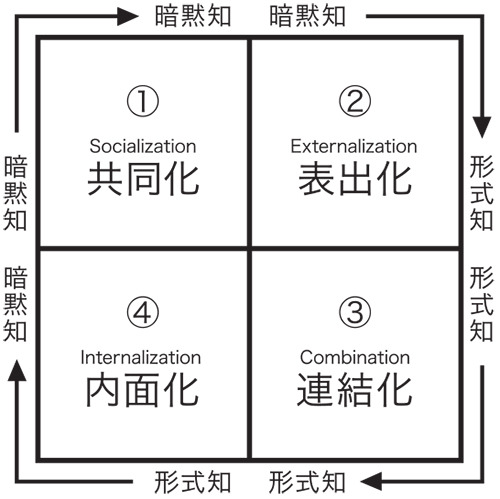 |
Organizational Strategy in the Network Era (Published by Daiichi Hoki)
|
My father, who passed away last June, was, in a word, a wild card. He designed buildings like a rice cracker shop in Ginza and a furikake shop in Yotsuya, some of which still stand today. Yet, perhaps raised as the heir to a construction company in Shimbashi, he was flashy and self-indulgent. He adored women, splurged lavishly in Ginza, and engaged in questionable activities outside the home. This led to divorce, the collapse of his company, and the loss of his fortune. Even in his final days, he continued to trouble the women close to him. Given his character, he certainly wouldn't have read management books. But it must have been right after I entered university. When I visited his Shimbashi office, he gave me a copy of Organizational Strategy in the Network Era. Feeling I'd received something odd, I just flipped through it and put it away. It remained buried deep in my bookshelf for years afterward. Looking back now, that was the moment I first held a book by Professor Ikujiro Nonaka.

Professor Nonaka's "The Knowledge-Creating Company" is a globally renowned masterpiece. It redefines the "organization" – previously seen merely as a conduit for information transmission – as the primary agent of knowledge creation, with middle management as its protagonists, and explains the mechanisms that drive innovation. Then, over ten years after joining the company, when I reread this book, I felt – and this might sound like self-praise – "Could Dentsu Inc. be the company that has created the most organizational knowledge in the world!?"
For instance, Professor Nonaka states that to foster innovation, it is essential to form "cross-functional teams with heterogeneous members" and "allow individuals the greatest possible freedom of action, circumstances permitting." He further explains, "It's not a case of 'my job starts here and yours starts there.' Everyone must run from start to finish."
Conversely, when Dentsu Inc. creates advertising campaigns, teams with "cross-functional heterogeneity" are formed, centered around sales and including creative, marketing, media, PR, etc., where a significant degree of freedom is permitted. Sales is sometimes expected to function like creatives, marketing like media—each crossing their functional boundaries. Members are assembled and disbanded for each client's product and each campaign. It makes you wonder if the number of project teams Dentsu Inc. has formed since its founding might be greater than any other company worldwide.
 |
SECI Process: Four Modes
|
According to Professor Nakanishi, project teams that drive innovation undergo a process called SECI. In the first mode, ① Socialization, centered around middle management who receive the mission from superiors, the entire team discusses freely regardless of title or qualifications, sharing their thoughts (tacit knowledge). In the subsequent mode, ② Externalization, these thoughts are crystallized into a clear concept. In ③ Combination, new concrete measures are reconfigured according to this concept. Then, by putting these into action or practice, new experiences accumulate within the members in ④ Internalization. Through the interaction between "tacit and explicit knowledge" and "individuals and organizations," these four modes function as an infinite spiral, enabling the organization to generate innovation.
When Dentsu Inc. creates advertising campaigns, it follows a process similar to SECI. Immediately after receiving client briefings, the entire team discusses and shares ideas. A broad direction is then expressed as a concept, and each member develops specific strategies aligned with it. As the campaign is implemented, members gain new insights, gather again to share them... and the spiral continues.
Both how we form project teams and how we proceed with work follow SECI precisely. This conviction – "Dentsu Inc. is the company that has experienced the most innovative thinking in the world!" – was the major catalyst for me to compile the methodology for idea creation, "Circular Thinking."
The "concept"—often reduced to tedious explanations in practical settings—should, in its true sense as Professor Nonaka describes, be fundamentally the same as the advertising industry's "(Big) Idea" (see: Part 19 ). This is precisely why Dentsu Inc. possesses a unique thought process capable of sparking innovation in any company. This is the core assertion of Circular Thinking, inherited from its father, SECI.
Now then. Next time, we'll cover "The Siblings of Circular Thinking."
Enjoy!





